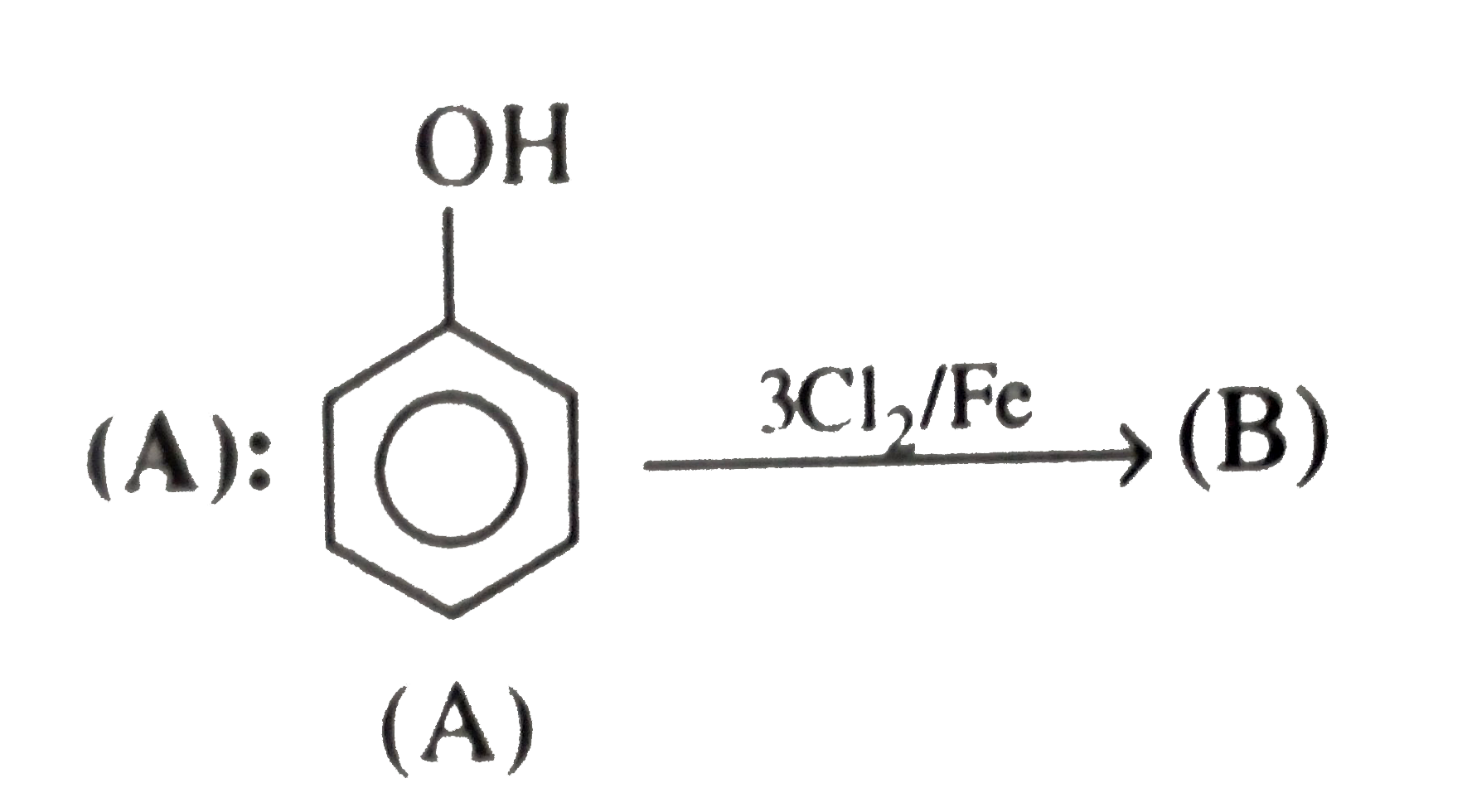Assertion (A): 
The product (B) is 
Reason (R ): Phenol cannot be chlorinated because the ring is susceptible to oxidation by CI2.
If both (A) and (R ) are true and (R ) is the correct explanation of (A).
If both (A) and (R ) are true but (R ) is not the correct explanation of (A).
If (A) is true but (R ) is false.
If both (A) and (R ) are false.
The correct Answer is:D
NA
Topper's Solved these Questions
- ALCOHOL,PHENOL AND ETHERSBOOK - CENGAGE CHEMISTRYCHAPTER - ALCOHOL,PHENOL AND ETHERSEXERCISE - Archives Single Correct
14 Videos
- ALCOHOL,PHENOL AND ETHERSBOOK - CENGAGE CHEMISTRYCHAPTER - ALCOHOL,PHENOL AND ETHERSEXERCISE - Archives Assertion-Reasoning
2 Videos
- ALCOHOL,PHENOL AND ETHERSBOOK - CENGAGE CHEMISTRYCHAPTER - ALCOHOL,PHENOL AND ETHERSEXERCISE - Exercises Single Correct
82 Videos
- ALIPHATIC AND AROMATIC ALDEHYDES AND KETONESBOOK - CENGAGE CHEMISTRYCHAPTER - ALIPHATIC AND AROMATIC ALDEHYDES AND KETONESEXERCISE - Archives Subjective
29 Videos
Similar Questions
Knowledge Check
Statement-I:


Statement-II Phenol cannot be chlorinated because the ring is susceptible to oxidation by Cl2.AIf both statement-I & statement-II are true & the statement-II is a correct explanation of the statement-IBif both statement-I & statement-II are true but statement-II is not a correct explanation of the statement-ICIf statement-I is true but the statement-II is false.DIf statement-I is false but the statement-II is true.Assertion (A) : A cyclotron cannot accelerate neutrons.
Reason (R) : Neutron cannot accelerate neutrons.AIf both assertion and reason are true and the reason is the correct explanation of the assertion.BIf both assertion and reason are true but reason is not the correct explanation of the assertion.CIf assertion is true but reason is false .DIf the assertion is false but reason is true.Assertion (A) : Resorcinol turns FeCl3
Reason (R) : Resorcinol is trihydric phenol.ABoth A and R are true and R is the correct explanation of A.BBoth A and R are true and R is not a correct explanation of A.CA is true but R is false.DA is false but R is true.
Assertion (A) Cu cannot liberate hydrogen from acids.
Reason (R ) Because it has positive electrode potential.
View SolutionAssertion (A) : Phenols are stronger acids than alcohols.
Reason (R ) : Phenol exhibits resonance in which the phenoxide ion gets stabilised.
View SolutionAssertion (A) : Phenol is strongly acidic than ethanol.
Reason (R) : Phenoxide ion is more stabilized by resonance than ethoxide ion.
View SolutionAssertion (A): F2 undergoes disproportionation reaction.
Reason (R ): Fluorine shows both positive and negative oxidation states.
View SolutionAssertion (A) : Phenyl is used as a household germicide.
Reason (R) : Phenyl is phenol derivative and phenol is an effective germicide
View Solution
